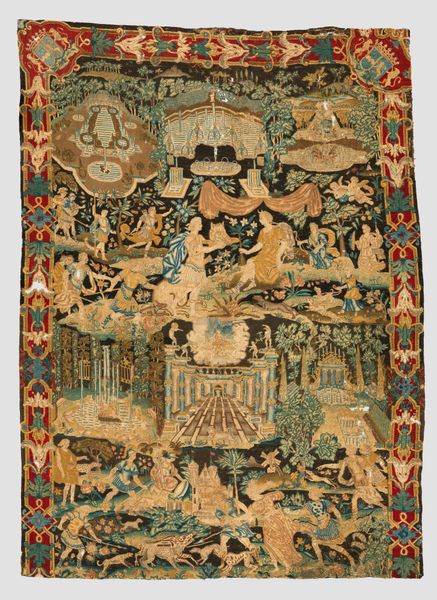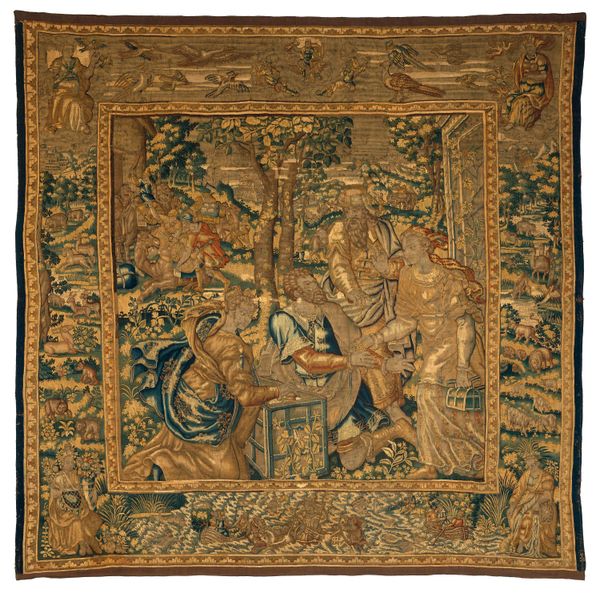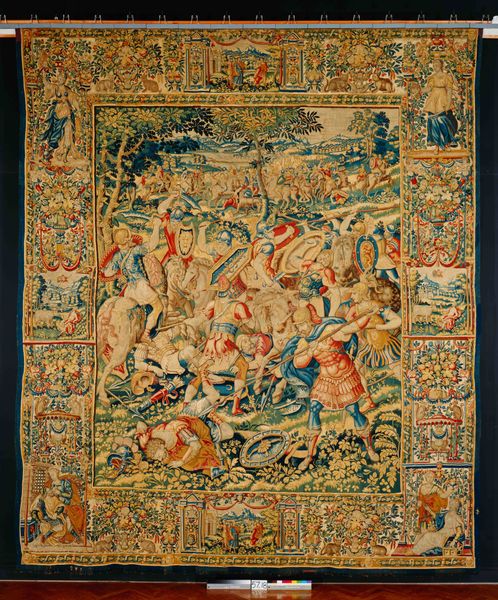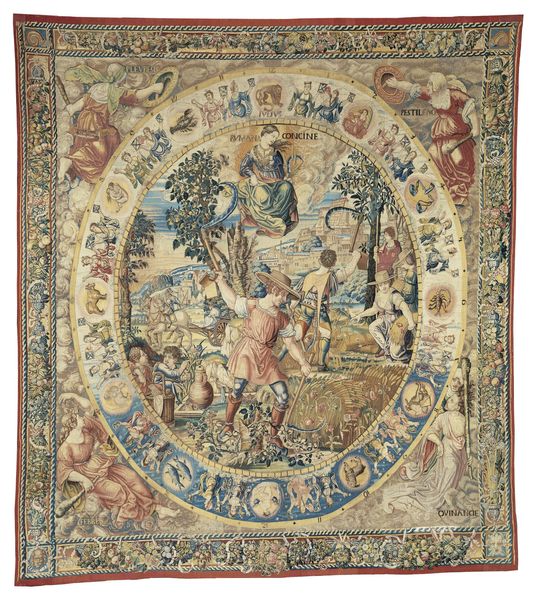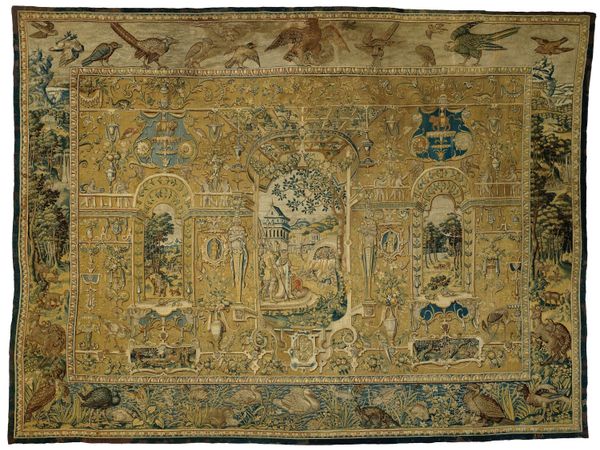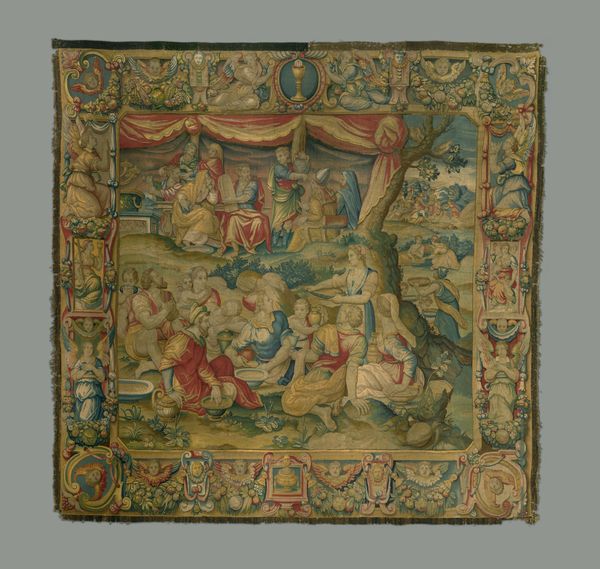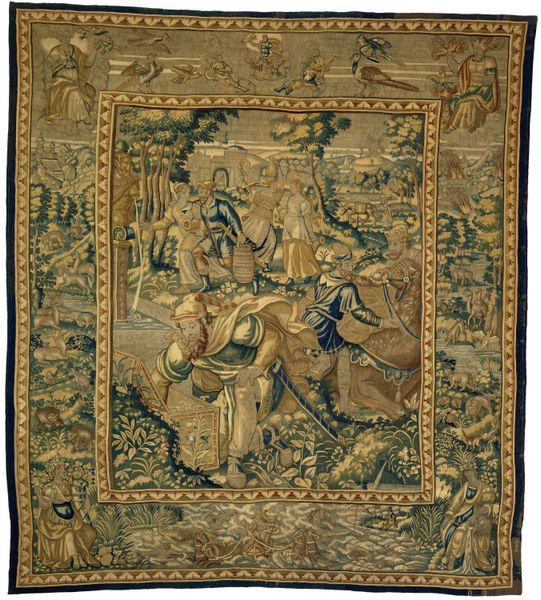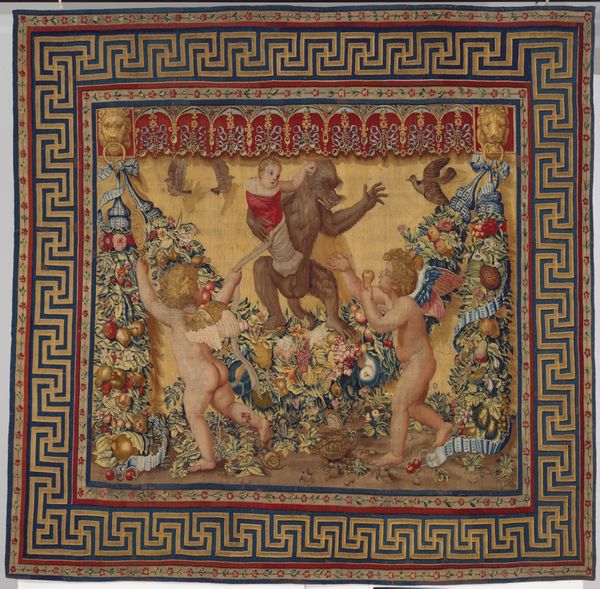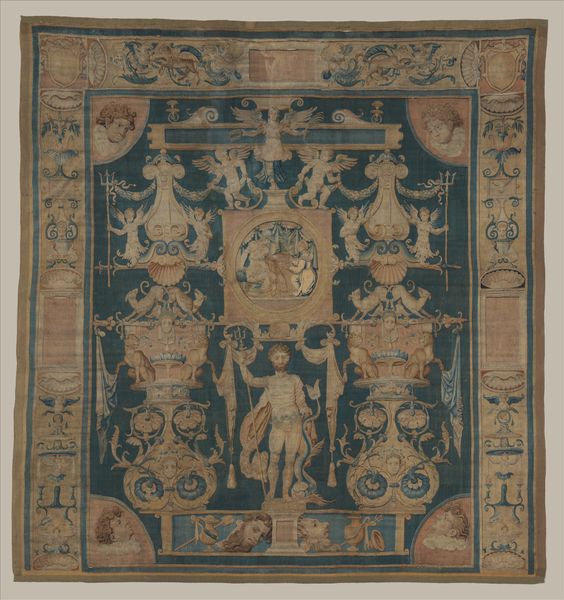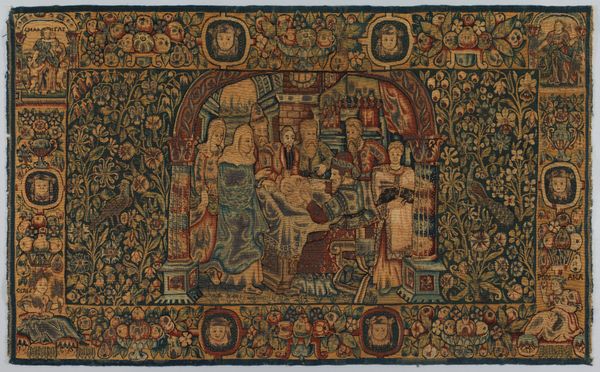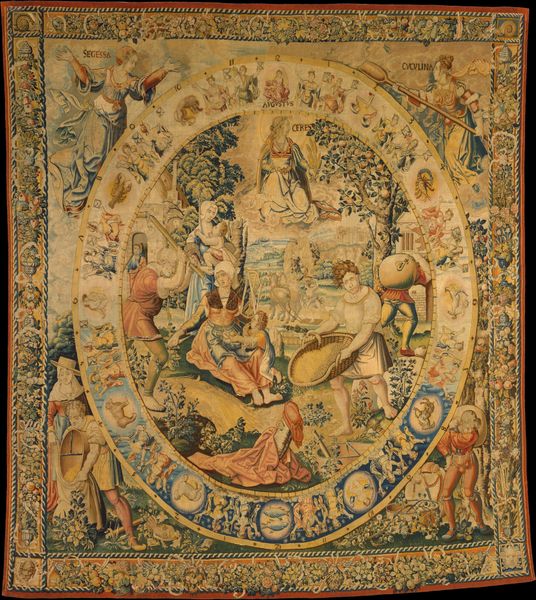
"The Repentance of the Prodigal Son" from a set of six of The Parable of the Prodigal Son 1600 - 1615
0:00
0:00
weaving, textile, sculpture
#
medieval
#
narrative-art
#
dog
#
weaving
#
textile
#
text
#
sculpture
#
men
#
genre-painting
#
decorative-art
Dimensions: 20 1/2 × 20 5/8 in. (52.1 × 52.4 cm)
Copyright: Public Domain
Editor: This textile, titled "The Repentance of the Prodigal Son" from a set of six of The Parable of the Prodigal Son, dates back to between 1600 and 1615. What immediately strikes me is how narrative it is, almost like a scene from a play woven into fabric. How would you interpret this work in its historical context? Curator: Well, consider the socio-political function of textiles like this in the early 17th century. Tapestries weren't merely decorative; they were status symbols, displays of wealth and power. Representing a biblical parable speaks volumes. Who would have commissioned it and where might it have been displayed? Editor: Probably someone affluent with some religious inclination…perhaps to decorate a dining hall to evoke conversation? Curator: Precisely. And the choice of this parable – the prodigal son returning – likely isn't accidental. It subtly reinforces ideas about social order, forgiveness, and the acceptance of authority, which were critical to the stability of the ruling classes. It could even subtly suggest an individual's or a family's redemption. Editor: So the art isn't just passively reflecting society but actively shaping and reinforcing values. The inclusion of animals and surrounding nature almost make the story even more accessible as a visual narrative, in a way, domesticating it. Curator: Exactly. It’s not just a religious scene, it's a social statement crafted within a very specific historical and cultural landscape. Also, think about its visual impact, the scale, texture, its permanent display. These were investments intended to project a certain image. What do you take away from looking at it with this in mind? Editor: I now appreciate that it offers insight into how art functioned as both a signifier and a reinforcer of social values. This weaving goes far beyond decor, it is powerful! Curator: It shows us how artworks serve as instruments of socio-political narratives and public instruction during their time.
Comments
No comments
Be the first to comment and join the conversation on the ultimate creative platform.



